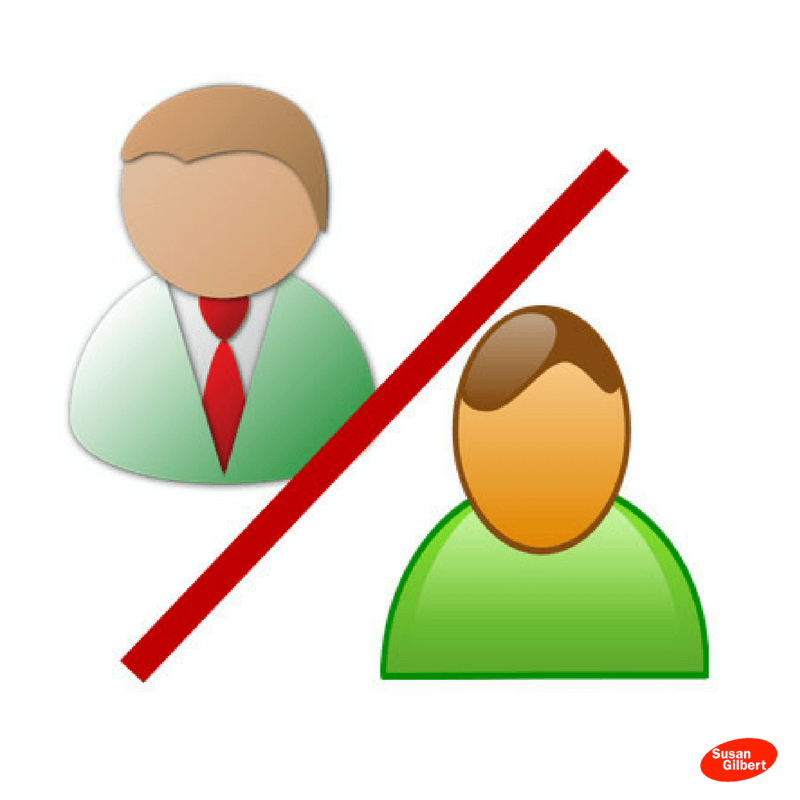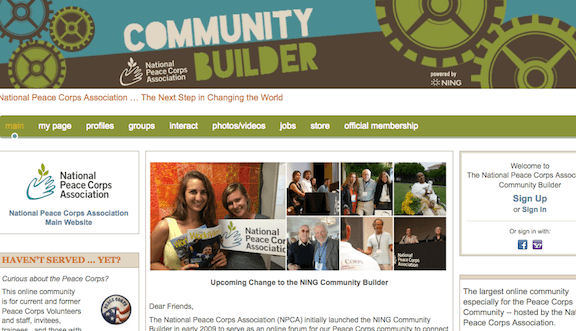How to Stay Focused With Your Social Media Marketing for More Success
 Your social media plan is like the rails that your social media train runs on. Without the rails, the train could still move quickly – But it would just run everywhere, and quite possibly be dangerous. The same goes for social media.
Your social media plan is like the rails that your social media train runs on. Without the rails, the train could still move quickly – But it would just run everywhere, and quite possibly be dangerous. The same goes for social media.
You can spend a lot of time on social media without actually getting much done. You can even damage your brand by spending too much frivolous time on social media. On the flip side, with a strong social media plan, social media can be an incredibly powerful tool for building your brand and your following.
So what should you include in your social media plan?
Core Goals and Metrics to Track
To start with, you should have your core goals and your core metrics figured out right at the very beginning.
Begin with your goals. What do you want to use social media for? Are you trying to meet JV partners? Are you trying to land speaking engagements? Are you trying to expose your brand to more people? Are you trying to build up your follower count? Are you trying to drive traffic to your site and get actual buyers?
The metrics you’d track stem directly from your goals. For example, if you’re trying to build up your follower count, you might track virality and new followers per day as your core metrics. On the other hand, if you’re trying to make sales, visitors to your website might be your most important metric.

You can’t have a good social media plan without clear goals. Start your planning by figuring out what your goals are, then pick your core metrics to track.
What Social Media Sites You Plan to Cover
Your plan should cover exactly which social networks you plan to be on. The networks you use depend mostly on who you’re trying to reach.
Let’s say you’re trying to land more speaking gigs. In this case, being on Facebook might not be the best way to reach your target audience. Instead, getting on LinkedIn is probably your best avenue, followed by Twitter.
Don’t neglect smaller social networks either. For reaching an early adopter crowd, Google+ could be still be a very viable option. Smaller communities might have their own social networks setup on like on Ning (as shown below).

The long and short of it is this: Go where your audience is.
Breakdown of How to Spend Your Time
Your plan should have a detailed outline of how you plan to spend your time. For example, your plan might look something like this:
• Monday: 30 Minutes Scheduling Facebook Posts, 30 Minutes Scheduling Twitter
• Tweets
Tuesday: 30 Minutes Replying to Messages, 30 Minutes Posting on LinkedIn
• Q&A
Wednesday: 60 Minutes Post on Forums, Comment on Blogs
• Thursday: Repeat Monday
• Friday: Repeat Tuesday Try to segment your activities into different “buckets.” When your time in one bucket runs out, move on. Don’t let yourself get sucked into one thing for too long.
List of Essential Actions
What are the most important things you have to get done every week?
If you’re trying to land speaking gigs, then an essential action should be to respond to any conference organizer within 3 business hours. It doesn’t matter what else you’re doing, this takes precedence.
If you’re trying to build a social media following, your essential action might be not missing a post. You have a schedule and you stick to it rigidly. If something might detract you from hitting your posting deadline, those things have to wait.
Having a list of your essential actions can help you prioritize tasks in a busy work environment.
A Plan for Outreach & Connection Building
Two things you should have as part of your plan are building your audience and deepening your connection with your community.
Your outreach strategy should be, again, tailored to your goals. If you’re trying to reach influencers, you might comment on their blogs for several weeks before shooting them a direct Twitter message. If you’re trying to build a Facebook audience, your strategy might involve putting out innovative content every month.
As for building connections, the most important thing to realize on social media is the value of a single person. It’s easy to get lost in the statistics and the crowd of a thousand likes. But often time’s your biggest breakthroughs – PR7 links, JV opportunities, speaking gigs, etc – Will come from the most unexpected places.
Whenever you can, reach out and get in touch with people one on one. Acknowledge your fans and build real connections.
Treat This as a Living Document
Don’t treat your plan as something that’s set in stone. Treat it as something that’s organic. Your plan should grow as you grow and as your audience grows.
Figure out what’s working and what isn’t about your social media plan, then adjust your plan accordingly. Treat your plan as a living document. Use it as a tool to keep yourself and your company on track as you head towards your goals.
Use these these ten tips to stay focused on your social media marketing strategy:
Tip #1: Keep Your Business & Personal Accounts Separate
Mixing the two accounts is a recipe for disaster. You’ll log on to update your Twitter status, then get sucked right into the funny video of your next door neighbor’s niece.
If you have your accounts mixed, separating them alone will drastically boost your productivity.
Tip #2: Do Not Multitask
When you’re working on social media, you should spend that time only working on social media. Don’t do other things at the same time.
People will often try to do social media “on the side” while they’re taking care of other things. For example, you might be listening in to a company wide call that isn’t taking up your full attention. So, you might hop on Twitter at the same time to post a few things.
This is bad, because it trains your brain to not separate social media work time from other things. By not multitasking and only doing social media during social media time, you train your brain to work on social media in a very focused way.
Tip #3: Have a Daily Action Plan
Having a plan for how you spend your time on social media can really help minimize distractions. For example, if you plan on using your social media time to build an influence, you might break your time down like this:
• 5:00 – Schedule Posts in HootSuite
•
5:30 – Respond to @Mentions, Read Tweets, Retweet
•
6:00 – Send Personal Messages to Influencers
Don’t “wing” your social media.
Tip #4: Do Your Social Media When Your Work is Finished
Plan your social media time after the majority of your work is finished. Though social media is an important marketing venue, it’s rare that it’s really so urgent that it needs to be done early in the day.
Doing your social media last helps cut down the likelihood that your social media work would detract from the rest of your day.
Tip #5: Avoid Chats
Turn off your chats. Turn off Facebook chat, Google chat and any other chat programs you have running in the background. Many social networks will have a chat program weaved into their basic functionality. Make sure those chat systems are off.
Chats can throw your entire day out the window. Someone might message you and a 15 minute social media session suddenly turns into a 40 minute conversation. Often time’s you’ll have trouble saying no to someone’s communication because you don’t want to damage the relationship. You’re better off just turning your chats off in the first place.
Tip #6: Learn to Recognize Seemingly Urgent But Unproductive Behaviors
Do you really need to watch that 2 minute video that someone just uploaded? Do you really need to respond to that provocative comment?
A lot of the content you see on social media is designed to be inherently attention catching. They can seem urgent. But when you look at them objectively, you’ll find that it’s really counter productive to spend your time on it. Whenever you’re tempted to click on a link, ask yourself: “Is this really going to forward my business?”
Tip #7: Don’t Do It Alone
Doing social media alone is a big pitfall for many reasons.
First, there’s nobody to tell you when you’re going off course. Second, it’s easy to get distracted and not get things done if there’s nobody you’re accountable to. Third, you have nobody to share your triumphs with, which makes social media less exciting.
Having someone to share your social media ventures with gives you a strong framework to work in. Sharing your projects with a supervisor, a peer, with your business partner or with fellow online entrepreneurs can really help boost your social media focus.
Tip #8: Stay Focused on Learning One Thing at a Time
Social media users often try to take on far too much at once. They try to learn how to run a contest, how to learn new software, how to use a new social network and so on all at the same time.
Each task individually might not seem like it’s challenging to learn. But when you pile your plate high with new things, you’re going to have a scattered attention span. That sense of being scattered will cause you to be more easily distracted. It’ll also take you longer to learn any skill than if you learned them thoroughly one at a time.
Learn to focus on learning one thing at a time. Once you master that one thing, then you can take on something else.
Tip #9: Use Tools to Condense Your Sessions
It’s nearly impossible to focus on your work if you have to log into Twitter, Facebook and other social networks many times throughout the day. But many audiences do expect you to post updates throughout the day.
That’s why it’s absolutely crucial that you use tools like HootSuite and Buffer to schedule posts and updates. These tools allow you to communicate at the frequency that your followers expect, without having to distract yourself from your workday all the time.
Tip #10: Be Metric Driven
When you’re accountable for delivering metrics and you use your social media time in a goal driven manner, you’re going to be much more productive. It’s when you’re just “doing social media” for the sake of doing it, without a goal, that tends to detract from focus.
If you don’t have clear metrics, you’ll have a hard time staying driven. After all, you won’t know when you’re doing things right and when you’re doing things wrong, so it really doesn’t matter what you do. But when you have clear metrics, you’ll know exactly when you’re on track and when you’re not.
What you track improved. Track your social media progress.
Having more focus will help you have more success with your social media activities, so you progress quickly in the social sphere and your workday.


0 Comments